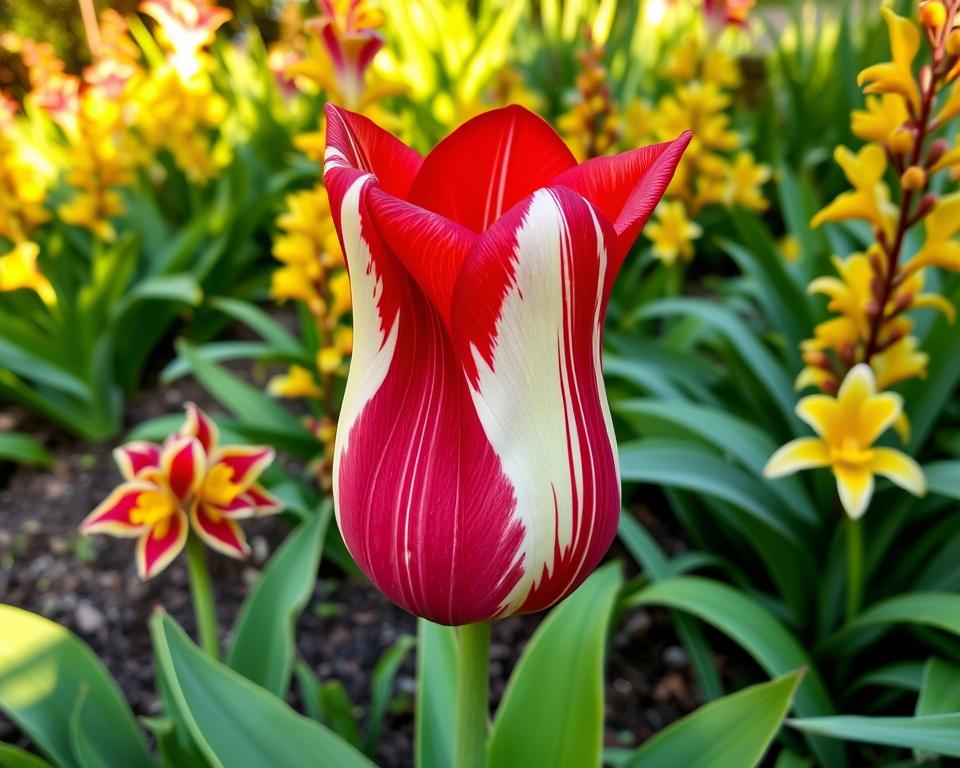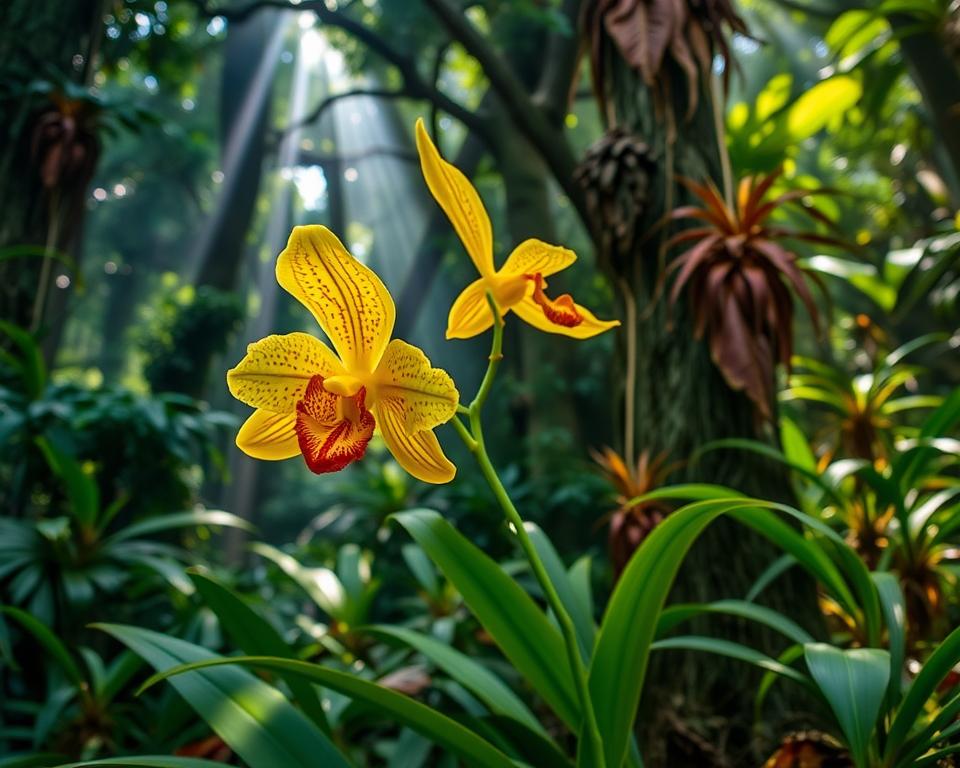How to Grow and Care for Lavender: A Beginner’s Guide
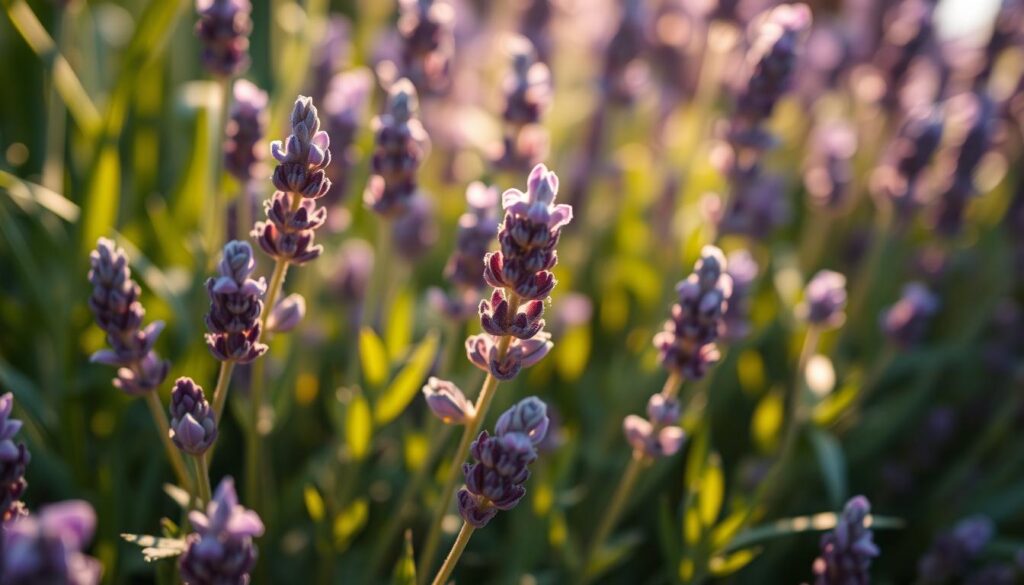
Lavender is a beautiful and fragrant plant that can bring joy and serenity to any garden. Growing and caring for lavender can be a rewarding experience. With the right guidance, anyone can become a successful lavender grower.
Many people are drawn to lavender for its calming scent and its ability to attract pollinators. Lavender care is relatively low-maintenance, making it an ideal choice for gardeners of all levels.
Whether you’re looking to add a pop of color to your garden or simply want to enjoy the benefits of lavender, this guide will provide you with the knowledge you need to get started.
From planting and watering to pruning and harvesting, lavender care requires attention to detail and a willingness to learn.
With its numerous health benefits and versatility in cooking and crafts, it’s no wonder why lavender has become a popular choice among gardeners.
By following the tips and guidelines outlined in this guide, you’ll be well on your way to growing and caring for healthy and thriving lavender plants.
Introduction to Lavender
Lavender is a flowering plant known for its calming effects and fragrance. It’s loved for its beautiful purple flowers and soothing scent. Lavender has been used for thousands of years in many cultures for its health benefits.
As you start growing and caring for lavender, you’ll see its value. It can help you relax, improve your sleep, and even keep pests away. Lavender’s history is also interesting, with ancient people using it for medicine and spiritual reasons.
What is Lavender?
Lavender is a low-maintenance plant that’s easy to grow. It’s perfect for any garden because of its calming effects and fragrance. Lavender has been used for centuries, especially in ancient Greece and Rome for its healing properties.
History of Lavender
Lavender’s history goes back to ancient times. It was used in ancient Egypt, Greece, and Rome. People valued it for its medicinal, culinary, and spiritual uses. Today, lavender is still loved for its calming effects and fragrance, and its history continues to inspire people worldwide.
| Lavender Variety | Description | Benefits |
|---|---|---|
| English Lavender | Compact, fragrant flowers | Promotes relaxation, improves sleep quality |
| French Lavender | Tall, upright stems with purple flowers | Repels pests, improves mood |
| Spanish Lavender | Short, compact stems with pink flowers | Improves cognitive function, reduces stress |
Benefits of Growing Lavender
Growing lavender can greatly improve your well-being and surroundings. Its amazing scent is not just pleasing but also calming. This makes it a favorite for aromatherapy. Lavender essential oil, made from the flowers, is used in many skincare products. It’s valued for soothing and healing the skin, showing the many benefits of lavender.
Lavender offers many health benefits, like reducing anxiety and stress and helping you sleep better. Lavender skincare products are popular because they are natural and gentle. By adding lavender to your daily life, you can enjoy these benefits. This can be through using Lavender essential oil or simply enjoying the plant’s scent in your garden.
Aromatic Qualities
Lavender’s unique scent is a big reason for its popularity. Its aroma can greatly improve your mood and create a calm atmosphere. This makes lavender perfect for any garden or indoor space. It also acts as a natural pest repellent, keeping insects away from your garden. This highlights the many advantages of lavender, including its benefits for skincare.
Health Benefits
Studies have shown that lavender has many health benefits. It can help reduce anxiety and stress. The plant’s essential oil can be used in different ways, like in aromatherapy and skincare products. This makes lavender a versatile and natural way to improve your well-being, which is a key benefit of lavender.
By growing lavender, you can enjoy these benefits and improve your life quality. You can also explore the many uses of Lavender essential oil and Lavender skincare.
Pest Deterrent
Lavender is great for keeping pests away from your garden. Its scent repels unwanted insects, reducing the need for harmful pesticides. This makes your garden a healthier place for other plants to grow. Growing lavender is rewarding, thanks to its beauty, health benefits, and pest-repellent qualities. It shows the value of lavender in our daily lives, especially in skincare.
| Lavender Benefits | Description |
|---|---|
| Aromatic Qualities | Calming effect, natural pest deterrent |
| Health Benefits | Reduces anxiety and stress, promotes better sleep |
| Lavender Skincare | Soothes and heals the skin, natural and gentle properties |
Choosing the Right Lavender Variety
There are many lavender varieties to choose from, making it hard to pick the right one. Each variety has its own special traits and uses in Lavender recipes. Lavenders are mainly divided into English, French, and Spanish types.
Think about your climate, how you plan to use it, and what you like when picking a Lavender plant. English lavender is loved for its sweet smell and is great in cooking. French lavender has a stronger scent and is often used in potpourri and crafts. Spanish lavender has unique pineapple-shaped flowers, adding a special touch to gardens and decorations.
English Lavender Varieties
English lavender is a favorite for its sweet smell and versatility in cooking. It’s used in baking, teas, and potpourri.
French Lavender Varieties
French lavender is known for its strong scent. It’s used in crafts, perfumes, and arrangements. Its smell is stronger than English lavender, making it perfect for recipes needing a strong scent.
Spanish Lavender Varieties
Spanish lavender is known for its pineapple-shaped flowers. It’s used in gardens and decorations for its unique look. It’s also used in teas and potpourri for its sweet and subtle smell.
| Lavender Variety | Characteristics | Uses |
|---|---|---|
| English Lavender | Sweet fragrance | Culinary Lavender recipes, teas, potpourri |
| French Lavender | Potent scent | Crafts, perfumes, arrangements |
| Spanish Lavender | Distinctive pineapple-shaped flowers | Gardens, arrangements, teas, potpourri |
Ideal Growing Conditions for Lavender
To grow lavender well, you need to know what it likes. It needs the right sunlight, soil, and temperature. This ensures it grows strong and smells great.
Lavender loves full sun to bloom and smell strong. Pick a sunny spot for your lavender. It also needs well-drained soil to avoid root rot. Lavender can handle most temperatures, making it great for many gardens.
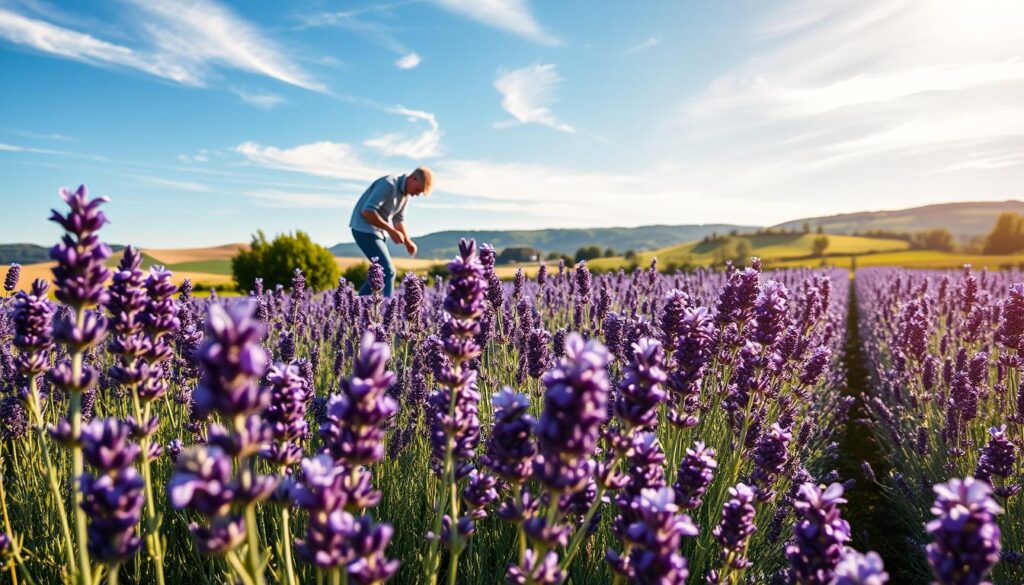
With the right conditions, lavender brings calm and beauty to your garden. Proper care keeps it healthy and fragrant. Enjoy its scent and blooms for many years.
| Condition | Requirement |
|---|---|
| Sunlight | Full sun |
| Soil | Well-drained |
| Temperature | Moderate |
Sunlight Requirements
Lavender needs full sun. Choose a spot with at least 6 hours of direct sunlight daily.
Soil Preferences
Lavender likes soil that drains well. This prevents root rot and helps it grow strong.
Temperature Tolerance
Lavender is quite hardy. It can handle most temperatures. But, protect it from extreme heat or cold.
Preparing the Planting Site
To make sure your lavender plants do well, you need to prepare the site right. This means checking the soil, making any needed changes, and picking the best spot. This way, your lavender will have the perfect place to grow, whether for Lavender care, Lavender recipes, or Lavender aromatherapy.
Soil testing is key, as it shows the soil’s pH and nutrient levels. Based on the test, you might need to add compost or other organic matter. This helps the soil be better for your lavender.
Soil Testing
Soil testing can be done with a DIY kit or by sending a sample to a lab. The results tell you about your soil’s pH, nutrients, and more. This info helps your lavender plants grow well.
Amending the Soil
After getting the test results, you can change the soil as needed. You might add lime to raise the pH or sulfur to lower it. You could also add fertilizers to help your plants grow strong.
Choosing the Right Location
When picking a spot for your lavender, think about sunlight, drainage, and how close to other plants it is. Lavender likes well-drained soil and lots of sun. So, choose a spot that gets at least six hours of direct sunlight a day. With the right site, your lavender will bloom beautifully for years.
Planting Lavender
Planting lavender is easy but needs some planning. The best time to plant is in spring or fall. This is because lavender loves cooler weather and well-draining soil. It’s perfect for
When planting, use the right techniques. Plant at the same depth as the pot and water well. This helps the roots grow strong, which is key for the plant’s health. Lavender oil, made from the flowers, is great for skincare. It’s calming and soothing.
When to Plant
The best time to plant lavender is in spring or fall. This lets the plant grow strong before summer or winter. Planting at the right time means your lavender will bloom well. You’ll have plenty of flowers for skincare and oil.
Planting Techniques
To plant lavender, dig a hole as deep as the pot and twice as wide. Carefully remove the plant and place it in the hole. Make sure the soil level is the same. Water well and add mulch to keep moisture in and weeds out. With care, your lavender will grow well, giving you natural Lavender oil.
Spacing and Arrangement
How you space and arrange your lavender plants matters. Most types need 12 to 18 inches between them. This helps air circulate and prevents disease. Following these tips will help your lavender thrive. They’ll give you plenty of flowers for years.
Watering Lavender: Best Practices
Watering lavender right is key, especially in the first year. Lavender can handle dry spells but needs water to grow strong roots. As it gets older, it can handle dry times better. Still, keeping it moist helps it grow well and bloom more, which is great for making Lavender essential oil and using it in many ways.
Initial Watering After Planting
Water your lavender often after planting to keep the soil moist. This helps the roots grow and the plant settle in.
Ongoing Watering Needs
As your lavender grows, water it once a week. Or water when the top inch of soil feels dry. Don’t water too much, as it can cause root rot and harm the plant and the quality of Lavender essential oil.
Signs of Overwatering
Watch for signs of too much water like yellow leaves and soft stems. Change your watering to keep your lavender healthy and ready for harvest.
| Lavender Care Tip | Watering Schedule |
|---|---|
| Initial Planting | Water regularly |
| Established Plant | Water once a week |
Fertilizing Lavender
Fertilizing lavender plants is key to their health. It gives them the nutrients they need to grow well and bloom. Lavender care includes light fertilizing during the growing season. This helps them grow lush and increases their yield.
Choosing the right fertilizer is crucial. A balanced, light fertilizer is best for lavender. They don’t need heavy fertilizing. Organic options like compost or manure are great. They improve soil health without harsh chemicals.
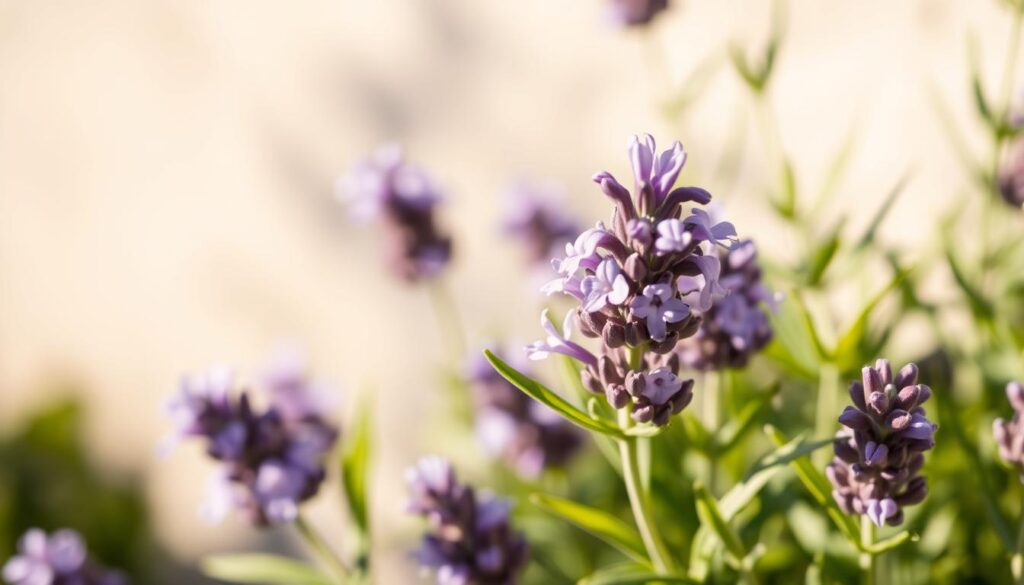
| Fertilizer | Benefits |
|---|---|
| Compost | Rich in nutrients, improves soil structure |
| Manure | High in organic matter, promotes healthy microbial activity |
| Worm castings | Rich in micronutrients, improves soil fertility |
Frequency of Application
The frequency of fertilizing depends on the fertilizer and the plants’ growth stage. Lavender plants usually need fertilizing in spring and summer. Fertilizing them right enhances their fragrance and growth. This makes them great for lavender recipes and aromatherapy.
Pruning Lavender for Health and Growth
Pruning is key for lavender care. It keeps plants shaped, promotes growth, and boosts blooming. For those using lavender in skincare, proper pruning is crucial. It ensures a good harvest of flowers for making lavender oil.
Timing is everything when pruning. The best time varies by type and location, but spring or after blooming works well. Using the right techniques is important to avoid harming the plants. For more on pruning neglected or woody lavender, check out lavender care resources.
Techniques for Pruning
Start by removing dead or damaged stems. Then, cut the plant back to about one-third of its height. Make sure to leave enough foliage for new growth. This encourages a bushy shape, perfect for lavender oil production.
Regular pruning keeps plants bushy and vibrant. It also prevents them from becoming leggy. This leads to fuller, more vibrant blooms.
Benefits of Pruning
Pruning has many benefits for lavender plants. It improves growth, boosts flower production, and enhances health. By pruning regularly, you enjoy the calming effects in skincare and their beauty in crafting and potpourri.
With the right pruning and patience, your lavender plants will thrive. You’ll enjoy their beauty and fragrance for years.
| Pruning Technique | Benefits |
|---|---|
| Removing dead stems | Promotes healthy growth, reduces risk of disease |
| Cutting back the plant | Encourages bushy shape, increases flower production |
| Regular pruning | Prevents leggy growth, enhances overall plant health |
Common Lavender Pests and Diseases
Lavender plants can face pests and diseases, even though they are tough. Knowing these issues helps keep your lavender healthy and productive. Taking care of your lavender is key to avoiding pests and diseases.
Aphids, whiteflies, and spider mites are common pests for lavender. You can fight them with beneficial insects or organic methods. Watching your plants closely helps catch problems early, keeping your lavender oil quality high.
Lavender can also get root rot. This can be stopped by good drainage and not overwatering. Knowing these risks and acting early keeps your lavender thriving.
Preventing pests and diseases starts with proper watering and fertilizing. Regular pruning and harvesting also help. With the right care, you can enjoy lavender’s calming scent and many uses in cooking and crafts.
| Pest/Disease | Preventative Measures | Treatment Options |
|---|---|---|
| Aphids | Introduce beneficial insects | Organic pest control methods |
| Whiteflies | Use yellow sticky traps | Insecticidal soap |
| Root Rot | Ensure good drainage | Improve soil quality |
Harvesting and Using Lavender
Harvesting lavender is a rewarding experience. It lets you enjoy the fruits of your labor. When the flowers are in full bloom, the essential oil content is highest. This is the best time to harvest and explore lavender uses, from cooking to aromatherapy.
When to Harvest
Lavender is ready to harvest when the flowers are in full bloom. This usually happens in the summer months. It’s the perfect time to use lavender in recipes and for aromatherapy.
Methods of Harvesting
There are several ways to harvest lavender. You can cut individual stems or use a sickle for more. The choice depends on the plant’s size and your intended use.
Creative Uses for Lavender
After harvesting, lavender can be used in many creative ways. You can use it in cooking, making potpourri, or crafts. Lavender aromatherapy is also popular for its calming effects. Exploring these uses lets you see how versatile and valuable lavender is.
| Lavender Use | Description |
|---|---|
| Cooking Recipes | Lavender can be used in baked goods, teas, and other recipes to add a unique flavor. |
| Aromatherapy | Lavender essential oil can be used in diffusers, candles, and massage oils to promote relaxation. |
| Crafts | Lavender can be used in wreaths, potpourri, and other crafts to add a decorative touch. |
Conclusion: Embrace Growing Lavender
As you finish this guide on growing and caring for lavender, remember the vast world of this plant. It offers many benefits and care tips. Each part has given you the knowledge to start your lavender-growing journey.
Lavender can add beauty, flavor, and health benefits to your life. Growing it lets you enjoy a plant that’s both lovely and useful. It also connects you with others who love nature, wellness, and creativity.
Start growing your own lavender today. It can bring peace and beauty to your space. Lavender’s magic can change your home into a serene haven. The journey is rewarding and full of endless possibilities.
